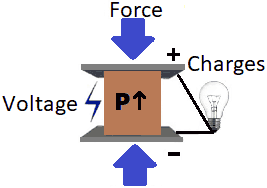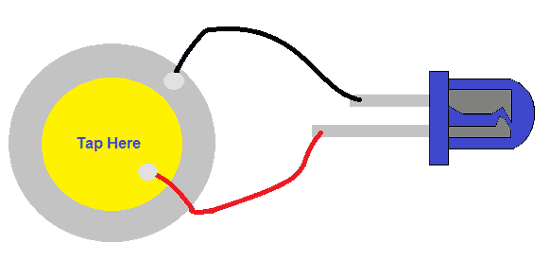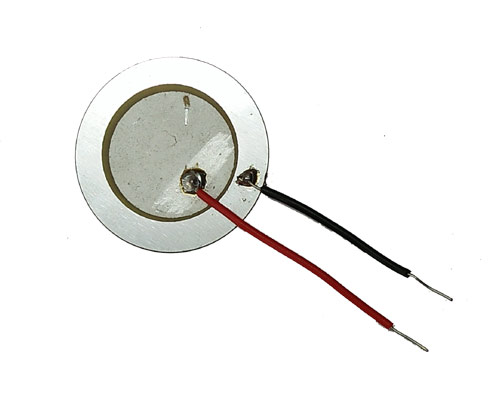Piezoelectric Sensor
Piezoelectric Sensor Pin Configuration
|
Pin Name |
Description |
|
Outer Circle |
This gives Negative output voltage |
|
Inner Circle |
This gives positive output voltage |
Features and Specifications
- Impedance:≤500Ω;
- Voltage:≤30Vp-p;
- Operating temperature:-20°C~+60°C
- Storage temperature:-30°C~+70°C
- Low Soldering temperature
- Strain sensitivity: 5V/µƐ
- Material: Quartz (mostly used)
Brief Description
Pierre Curie founded the piezoelectric effect in 1880, but it started to be used for industrial sensing application in 1950. Piezoelectric sensor is used to convert the mechanical stress into electric charge, it gives AC at output.
Piezoelectric Effect
The ability of a piezoelectric material to convert a mechanical stress into electrical charge is called a Piezoelectric Effect. The word Piezoelectric derived from the Greek word ‘piezein’ which means to push, press and squeeze. Piezoelectric effect is reversible effect means when we applied mechanical stress to the piezoelectric material we get some electrical charge at output. Same as when we feed electrical charge to the sensor it gets stretch or compresses.

Piezoelectric Material
|
Natural Piezoelectric Material |
Synthetic Piezoelectric Material |
|
Quartz (most used) |
Lead zirconate titanate (PZT) |
|
Rochelle Salt |
Zinc Oxide (ZnO) |
|
Topaz |
Barium Titanate (BaTiO3) |
|
TB-1 |
Piezoelectric ceramics Barium titanate |
|
TBK-3 |
Calcium barium titanate |
|
Sucrose |
Gallium orthophosohate (GaPO4) |
|
Tendon |
Potassium niobate (KNbO3) |
|
Silk |
Lead titanate (PbTiO3) |
|
Enamel |
Lithium tantalite (LiTaO3) |
|
Dentin |
Langasite (La3Ga5SiO14) |
|
DNA |
Sodium tungstate (Na2WO3) |
How to Use a Piezoelectric Sensor?
To use a piezoelectric sensor is the easiest task, just connect the positive and negative terminal to your circuit and press the top of sensor. By pressing, due to mechanical pressure it create voltage at output which is further feed to the circuit. You can simply connect a LED to the piezoelectric sensor, as shown in the circuit below. Whenever you press the sensor the LED will give a flash.

Applications
- Production and detection of sound
- Generation of high voltage
- Electronic Frequency generation
- Microbalances
- Ultra-fine focusing of optical assemblies
- Everyday applications like cigarette lighters














